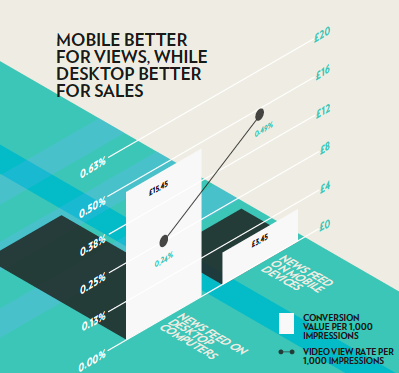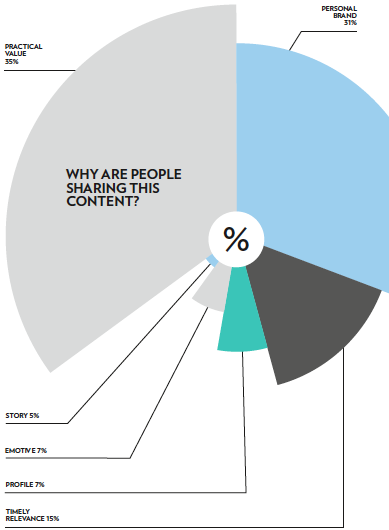The UK’s Content Marketing Association (CMA) has released the annual report «2015 Content Marketing and Data Intelligence» that looks at the number of citations of different types and formats of content as well as reasons why readers share it on social media. The study also includes analysis by ten industry experts representing both agencies and publishers, where they share advice on how to created winning data-based content marketing strategies.
To reveal the formula of the high content sharability, the experts have conducted a so-called citation audit and compiled the list of 50 most shared pages representing various industries. Then they have analysed the results by such criteria as content type, format, platform and motivation for sharing.
Unsurprisingly, editorial «evergreen» content is the most popular type of pages (27%), followed by CSR/charity stories (20%), news (17%), content hubs (14%), recruitment announcements (7%), research (6%), product pages (6%), company information (3%).

As to the format, again, editorial leads the chart (37%), followed by images (33%), videos (25%), tools and widgets (3%), downloads (2%).

The level of user engagement and conversion broadly depends on the platform. Thus, mobile are better for views (0.49% average conversion fro video views), while desktop yields better sales (£15.45 per 1000 impressions on average).

Looking at the reasons why people share content, experts come to a conclusion that the practical value (35%) is the main motivation. The second most important reason for users to ‘like’ and ‘share’ the content is to create a virtual ‘personal brand’ (31%) that reflects how they want to be perceived by others. The third most shared type of pages is ‘situational’ content that reflects timely mood or interests. Content from brands is shared at the lowest rate, 5%.
Ben McKay, Managing Director of MEC organic performance, is sure that the effective content strategy must be ‘multi-layered.’
«The ‘layering’ is important here. Alone, it’s not the complete answer to a content strategy. Being too literal with just one pool of insight will never help win a marketing or content war. But if you can begin to understand that black box of why people share content, you can research and understand anything,» he says.
More analysis and data from the «2015 Content Marketing and Data Intelligence» report is available here.